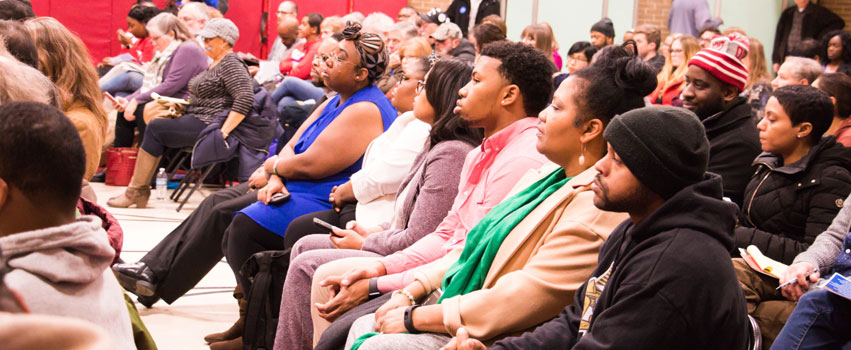Bob & Joan Ericksen
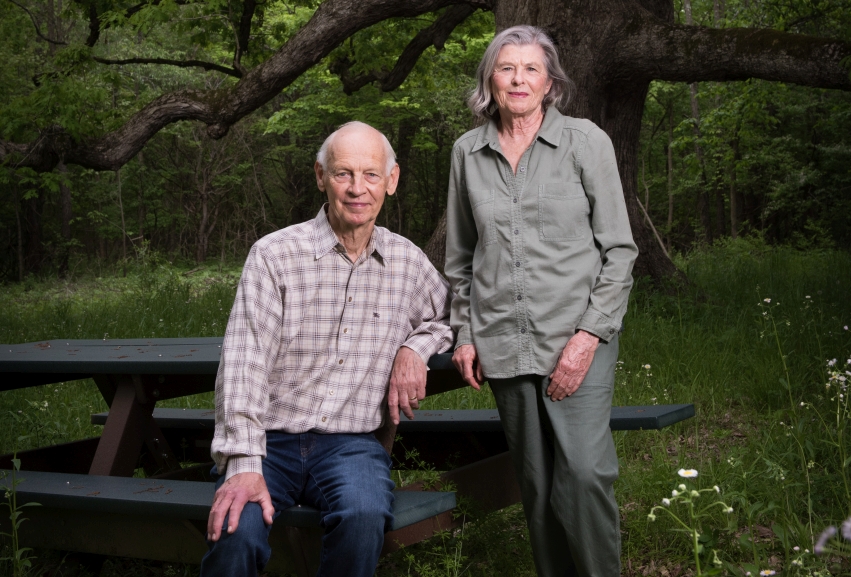
When Robert “Bob” Ericksen met Joan Root during their graduate studies in the mid-1960s, it was more than the start of a beautiful love story. It was a convergence of values, interests, drive and passion that would have a profound and lasting influence on thousands of youth across the years. They came together as artists and teachers with one mission—to connect children to art, science and nature, so they might experience the same magic they’d felt growing up, in spite of an increasingly polluted and industrialized world.
The Ericksens formalized this mission in 1973 with the incorporation of The Sun Foundation for Advancement in the Environmental Sciences and Arts, headquartered on Joan’s family farm in rural Washburn, Illinois. But even earlier, their community organizing on the south side of Chicago, their seminal work on the Blackfeet reservation in Montana, and their projects with design scientist R. Buckminster Fuller, author Studs Terkel, environmental health expert Dr. Bertram Carnow, and numerous other mentors had made a very powerful impact.
In 1974, they launched Art & Science in the Woods—a summer camp where students of all ages learn and work with artists, engineers, archaeologists, scientists and others in the natural beauty of the outdoors. This unrivaled experience would inspire multiple generations of students in their future careers, while its hands-on, experiential delivery provided a template for decades of programs to come, including the truly unique Clean Water Celebration, held at the Peoria Civic Center every April.
Over the years Bob and Joan have facilitated an astonishing lineup of programs through the Sun Foundation, including alternative energy and organic farm workshops; a Suzuki School of Music; environmental field trips and field science expeditions; theater productions and puppet shows. They’ve written books and pamphlets, produced films and videos, and hosted classes, workshops, lectures, exhibits, festivals and tours related to the arts and sciences, health and healing, nutrition, teacher education, blacksmithing, beekeeping, child development, survival skills, Native American culture and much more.
As the foundation they’ve spent their lives building nears its 50th year, Bob and Joan remain young at heart and unfailingly invested in reimagining a world of peace, health, equity, creativity, curiosity, compassion and kindness.
Joan, you grew up on the south side of Chicago in Roseland. Can you describe your childhood experience?
Joan: I grew up surrounded by wild prairies and walked to school on a path alive with wildflowers, insects, salamanders and birds. Roseland was a very diverse community—many children had a grandparent or parent who had come from another country. It was a community of great culture, food, music and dance. You got to know your neighbors, and everyone looked out for each other.
My grandfather ran the boilermaker at the Cook County Morgue; he was also a blacksmith and played the violin. My grandmother played piano and was a seamstress. The people she sewed for would give her their old clothes, and she would make them into clothes for us. She was able to feed many families in need from her garden. My grandparents were amazing people. They had very little, but were able to do so much for others.
My parents followed a similar path. Wherever they were needed, they helped their community. My father and his brothers owned a hardware store; my mother was an artist and musician. She played the piano every day, and we would learn and sing the songs she played for us. My parents took all the neighborhood children to see the wildflowers each spring, and my uncle took me to museums at a young age. As children, we went outside and played all day until someone called us home for dinner. It was a very rich environment for young people to explore nature—and explore who they wanted to be.
Bob, you grew up in Seattle, right?
Bob: Yes, and my family shared some things with what Joan just described. A lot of time was spent outdoors. Two species of salmon would come up the creek in our backyard each year, and it was magical… an invitation into the woods in our backyard, with the remains of cedar forests that had been logged years earlier. The neighborhood was filled with people of really diverse backgrounds.
Tell us about your education path. Did the two of you meet in college?
Bob: My college experience was different because I fundamentally believed I should explore a variety of subject areas. I kept experimenting. I tried different degrees in the arts, in architecture and so forth. I loved chemistry. I attended a small community college in Everett, Washington, and then I went to the University of Washington. Getting my second degree—that’s when I met Joan. I drove onto the campus one day and said, “Who’s that?” And my friend said, “That’s Joan Root.”
Joan: Bob and I met in graduate school at Cranbrook Academy of Art in Bloomfield Hills, Michigan. I studied dance as a child and did not plan to go to college, except possibly to continue my dance studies. In my senior year of high school, my art teacher came to see my father and told him I should go to college. So I attended the National College of Education in Evanston for a semester studying dance and education… then attended Northern Illinois University (NIU), where I majored in education and minored in philosophy, creative writing and arts. My graduate school advisor wanted me to broaden my studies and submit a portfolio of my work to the Cranbrook Academy of Art, and that’s where I finished my [MFA] degree and met Bob.
Bob and I had been involved in the civil rights movement and we had much in common as artists as well as our values. We babysat for the dean of the Academy’s children, and our studios were in the same building. Cranbrook had a great impact on our lives and helped form the vision for our future work.
After graduating from Cranbrook, Bob got a job in Seattle at Everett Junior College, where he had gone to undergraduate school. We lived in Seattle for a year. It was difficult for couples to get employment at the same institution, but the next year I was hired at Chicago City College, and Bob was also offered a position. We taught at Chicago City College for five years.
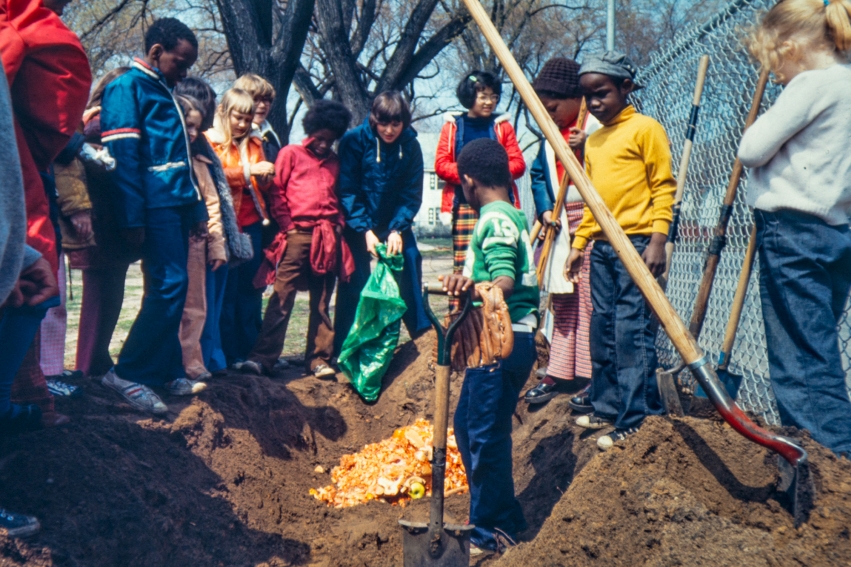
Bob: It was on the south side in an unusual campus. Some of the best creative students we ever had, but they had a lot of financial and environmental challenges.
Joan: Our students were from Cabrini Green [housing project] and the south-side neighborhoods with steel mills and factories—very taxing environments with a lot of chemical and air pollution. We had students who didn’t know where their food came from. There was no green space; many children lived in a totally concrete environment. It was not the childhood that we’d had, surrounded by nature. It was a powerful wakeup call for us.
Can you describe some of the projects you worked on during this time?
Joan: We were taking the students out of the classroom into reality, working on things that might help create a better environment for them. We cleaned up broken glass and bricks in the vacant lots, and we designed playground equipment based on [architect/engineer/inventor] Dr. Buckminster Fuller’s designs—building geodesic domes with the students. We had the privilege of working with “Bucky” and even wrote a book about design in nature in honor of his work, entitled The Four Little Pigs. Bob was licensed by Dr. Fuller to design affordable geodesic housing, and many projects developed from our studies with him.
In 1970 [Chicago author] Studs Terkel had us on his radio show, and the people from Urban Gateways [a nonprofit arts organization] heard the program. They invited Bob and I to come to teach in their elementary schools. We made a space where the students could exhibit and perform their expressions of art, and we had a program teaching about the web of life and the interconnections of nature. We taught them how to compost and planted trees in the schoolyards.
We also worked with Dr. Bertram Carnow, head of occupational and environmental health at the University of Illinois Medical School, because of the pollution and its impact on our students… He allowed us to go into the medical school’s research library. We spent weeks there, privy to information about certain chemicals and pollutants and their effects on disease and mortality.
Bob: And the use of those chemicals was increasing.
Joan: We were shocked that all this medical research had been done and we knew the outcomes, but weren’t doing anything about it. We worked with students to help bring awareness to how pollution was impacting our children. We learned a lot about community organizing working with Saul Alinsky on an air pollution reduction program. At a young age, we had such amazing mentors.
Tell us more about your work with the Blackfeet in Montana.
Joan: Dr. Henry Bieler, who wrote Food Is Your Best Medicine, was another mentor of ours. He was a pioneer in understanding the correlation between the environment, nutrition and disease. We spent a month with him every summer in Glacier National Park in Montana, working at his clinic between semesters. We learned a great deal from him and from the Native American people on the Blackfeet reservation, who we got to know through him. We recorded oral histories and made a documentary on their ancestral traditions and material culture. We presented programs in the park, worked on exhibits for the National Park Service, and made films that were used by PBS.
Bob: One of the elders was in his 70s—a nice gentleman, real friendly. He spoke some English and spoke the [Blackfeet] language. John Bear Medicine was a doll maker—he had a one-man show at the Smithsonian Institution. I asked him, “What’s your studio like? Can you show us where you do your work?” It was a pickup truck, jacked up off the ground, and he worked in the front seat. Open the glove box, and that’s where he stored his materials.
Joan: When the Blackfeet reservation was taken over by our government, all the children were taken to a boarding school and forbidden to speak their native language. John was one of the last people who could still speak the language. We got to be very close to him and to his grandson. Some of the recordings we made then are still being used to teach the Blackfeet Pikuni language today.
How did you decide to start the Sun Foundation?
Joan: We’re driving down Lake Shore Drive in Chicago. We were almost at Cabrini Green and we saw several children on the overpass. Their dog was on the highway, and they were screaming as they watched the dog being hit by one car after another. That moment hit hard… and we decided we couldn’t just be artists or teachers anymore—we had to bring what we had learned forward and do the work. How could we live with ourselves if we didn’t try to make a change?
Ken England from the Illinois Arts Council suggested that we expand what we were doing and become a nonprofit. We didn’t even know what a foundation was! [Laughs] Sanford Gail, an environmental lawyer, helped us form the organization and receive not-for-profit status, and that was the beginning of the Sun Foundation.
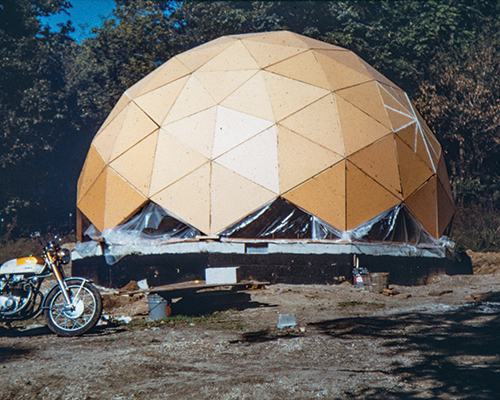
Why did you name it The Sun Foundation?
Joan: Our film [about the Blackfeet and the environment] was called The Sun Gave Man the Power, with Studs Terkel narrating. And Ken said, “Well, you just did this film… call it the Sun Foundation!” The idea was to connect young children to nature and to artists and scientists—to learn about the natural world, to learn about themselves, to express themselves creatively, and to become good stewards for their planet. We just kept learning, meeting people, and getting more and more resources.
Bob: People would ask, “How do you meet all these people?” Well, we meet them because of Joan’s interactions with people, and my interactions with people, and because you suddenly realize there’s this professor who might have a PhD, or maybe two PhDs… just invite them in. It’s about opening yourself up to opportunities. That’s what we did, whether it was in Seattle, Chicago, Montana or Peoria. We just invited more people into contact with the students.
So how did you come to central Illinois? Did your family already own the land?
Joan: My father always had a love for the soil. As he was able to build his business in Chicago, he started buying farmland. That is the land we are living on now, where the Art and Nature Center of the Sun Foundation is today. When we told my mother we wanted to connect children to nature, she said, “Why don’t you do it down at the farm?” During the summer, we lived in the geodesic dome that we designed and built. We lived there for five years until our son was born, and then we built our [current] home. Back then the dome was our office and home at the same time. [Laughs]
Bob: A whole 450 square feet. We made it work because if you were hungry, you cleaned the table up and laid out the food. And then you had to go to work, so you cleaned up all the food.
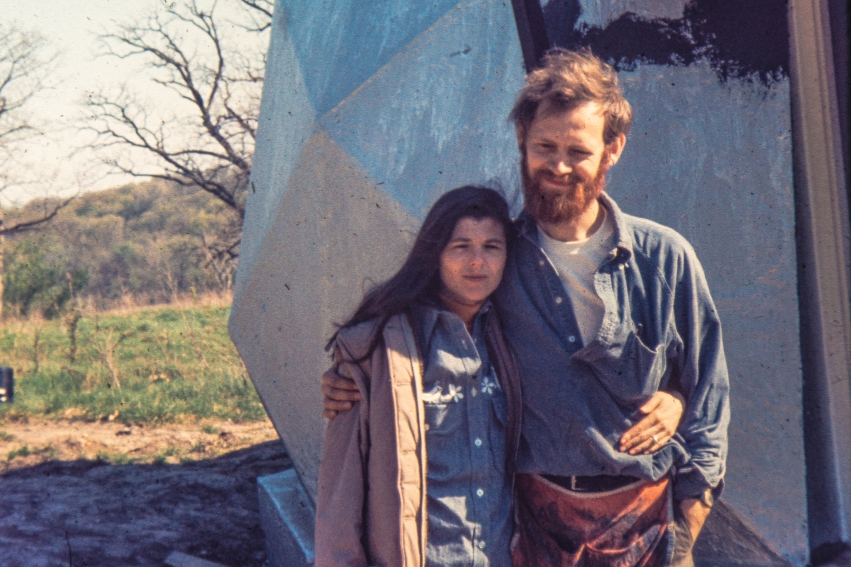
Tell us about the very first Art & Science in the Woods.
Joan: Our neighbor had a camp adjacent to the farm, and that’s where we held it the first year. We had 450 students, instructors, artists and scientists, both locally and from all over the country. We always made sure the program was for underserved children, from the city and rural areas. It was free and open to everybody.
Bob: People were surprised at how much diversity there was in the teachers… and how the students were so relaxed—because a lot of them came from cities. They quickly began to feel that it was a welcome, open environment.
Joan: It was an all-star cast: John White, Native American archaeologist and program director of the Field Museum; Amir Nour, a sculptor from Sudan; Kinji Akagawa, printmaker and sculptor; Dr. Lambert Princen, director of the Peoria Ag Lab; Greg De Pauw, artist from Metamora; Bill Boysen, potter, glassblower and professor… and so many others. For two weeks, the students created their own plays, wrote their own music, built solar collectors and wind generators, and worked with famous poets, naturalists and biologists. We invited the families to come see their work, and they were overwhelmed by the skills they had learned—and the volunteers were learning just as much as the children.
Many of our programs began to evolve from Art & Science in the Woods. That concept of finding people in medicine, people in nutrition, people in biology and the environment, people who love children, who love teaching, who love their life as a scientist or artist… who would nurture young people from this vast well of knowledge and experience… we felt that’s what we had to do.
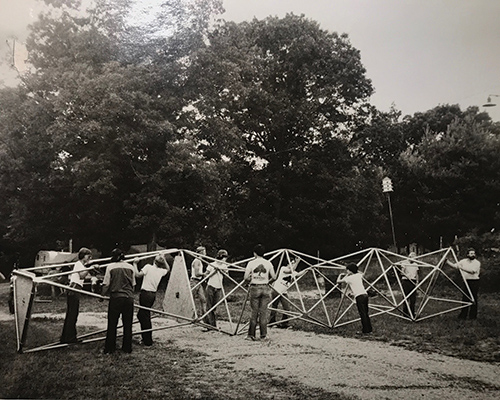
I love how your work has always been driven by direct, hands-on learning…
Bob: One summer we were invited to a school that had a program for kids on the southwest side of Chicago. We lined up a connection with a local farm and took about 30 or 40 students on a field trip. The farmer talked to them about growing wheat, how they use the equipment to plant and harvest, and so forth. He showed them what it’s like to milk the cattle, and what to do with the milk when you’re done. We took those students back to their school and showed them how to grind the wheat, produce flour and make bread. We showed them how to take the milk, separate it, and make the fat into butter. When they finished, they had the opportunity to eat fresh-baked, buttered bread, and it kind of blew their minds.
Joan: Their food connections had been broken. They were broken physically and emotionally. They were broken from nature, from science and from their creative ability.
Bob: Students today don’t work in a studio; they work at a computer. But if you ask where the ink in their color printer comes from, they have no idea. How much does it cost per gallon? No idea. One of our really important instructors is an artist who lives and works here locally. When Preston [Jackson] comes to paint, he can describe to them where his paint comes from. “It’s iron oxide. And there are three kinds of iron oxide…”
It is all about doing. Our son is the same way—he loves to see kids doing things. So whether you make your own ink, or your own paint or pencil or whatever… where do these things come from? Once you teach someone how to make paint, they love doing it. Those are really juicy connections; they are so important and so much fun. You’re working with a student, one on one, across the table from you. And I enjoy going out with the 12-year-old students to look for pigments and fossils and fish and turtles. It is an experience that any parent or teacher can share.
Tell me about the Clean Water Celebration and how it got started.
Joan: About 30 years ago, we felt that water was going to be a major issue our organization needed to tackle, so we worked on what we called “Water Week.” [Teacher] Karen Zuckerman wrote a curriculum for the schools and the community to follow, and we were fortunate to have [oceanographer] Jean-Michel Cousteau come give an amazing program at the Peoria Civic Center.
Karen told us about a group called the Rivers Project. Dr. Bob Williams from Southern Illinois University was training high school science teachers to train their students to do water quality studies in their communities, and they were really making an impact. So Dr. Bob came to Peoria, we had keynote speakers, and the students shared their research with one another.
We contacted Illinois American Water Company, the universities and various groups, and formed the Clean Water Navigating Committee. And with funding from Illinois American Water and contributions from area businesses and individuals, that’s how it started. What it is today evolved from that one project with Dr. Bob and the Rivers Project. That’s been the secret of the Sun Foundation all these years—the best minds, the best people, the best hearts coming together with a common goal.
Bob: Because of the work of Joan and Karen Zuckerman, our board of directors, and many other people, Clean Water Celebration has succeeded in carrying on year after year. The student audience and the teacher audience are so diverse and so large, and it’s free.
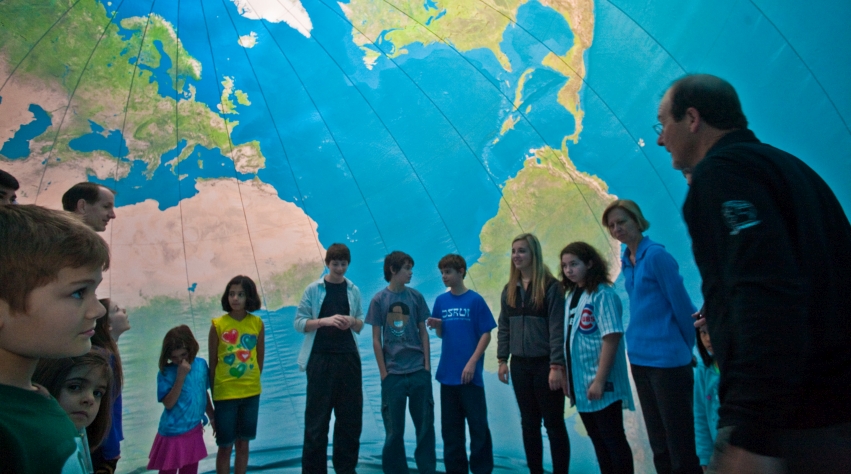
Let’s talk about some of the other programs of the Sun Foundation over the years. [The organization’s complete program history can be found at sunfoundation.org.]
Joan: We had the Suzuki School of Music, which provided Suzuki training for children. We had wonderful teachers and year-round instruction for students for 32 years. We still have our spring and fall field trips for schools to come out and have art and science classes. Our Community Arts Access Program, a matching grant program with the Illinois Arts Council, enables us to provide regranting funds for public arts programming in Stark, Marshall, Woodford and Bureau counties.
We’ve worked a lot on nutrition and early childhood development programs. And we loved to do the teacher training—we used to get grants to pay teachers for a whole month to do field science during the summer. A lot of those teachers went back and started nature programs in their own schools.
Bob: We presented the Fossil & Rock Day program for many years with Dr. Merrill Foster at Bradley University, offering examples of fossil material from his collection. Students worked with a teacher or professor to talk about this transit through time and bring fossils to life—as more than a stone you dug out of the ground.
Joan: Bill Close invented the Earth Harp here with the students. He was a student of Preston’s, and Preston brought him to Art & Science in the Woods. The first year he had the students make string instruments that were connected to the trees, and they played them. The next year he wired the performance barn, made the barn an instrument, and they “played” the barn. Then he and his students made a 20’ x 30’ sound box that looked like a cello on its side, took 25 feet of wire out to a rock, and that was the first Earth Harp. Then he brought it to Clean Water Celebration and strung the Peoria Civic Center Theater.
Bob: There were six or eight lines of brass wire, and it went from the stage up to the second balcony.
Joan: It was incredible. Jo Lakota, an attending teacher, said, “My students will never be the same.” That’s what we’ve tried to do with Art & Science… You know, the knowledge is there, but you’ve got to have inspiration. It’s got to stick with you. You have to use it. You have to love it. You have to take it in and make it yours. Those are the “goosebump moments” when you know you’re in the zone… When Preston Jackson is playing music and Garry Moore is playing the drums and all of a sudden one kid breaks out and starts dancing, you know that something has come alive. That’s why the arts are so important to the health of our country and the world. The arts can communicate. And it sticks.
What has it been like to work together on this lifelong passion project?
Joan: I don’t think we could have done this work without one another. Both of us came together as artists, in love with the visual world and with nature. We had family who were artists, and a community and education that included the arts and sciences. We came together to fight for what was lost—what we had as children. We were unified in our path, and we decided to do it together. And then we decided to ask everybody we knew to help! [Laughs]
Had I not met Bob, I can’t imagine this would have been my life. It’s a long-term contract that opens up so many avenues. It expands your mind, your vision, your character, your values—to have a partner you can work with and something you both believe in. It’s not going to be perfect… but you have this wonderful sounding board along the way that you learn so much from. It’s a privilege to have a partner you can share your path with… and those goosebump moments you get hooked on. That’s what makes life vital.
Bob: Bill Close comes in and strings the barn. Then he goes out and strings the valley. And he goes into the Civic Center and strings the theater. The minute he and the other musicians begin playing, you know right away: that’s it. I can’t describe that feeling, except you could call it goosebumps. I think sometimes the arts do things which are very quiet, very subtle and private—it’s one person with a canvas and paint and so forth. And other times, it’s an invitation for the community to come out and enjoy a new experience.
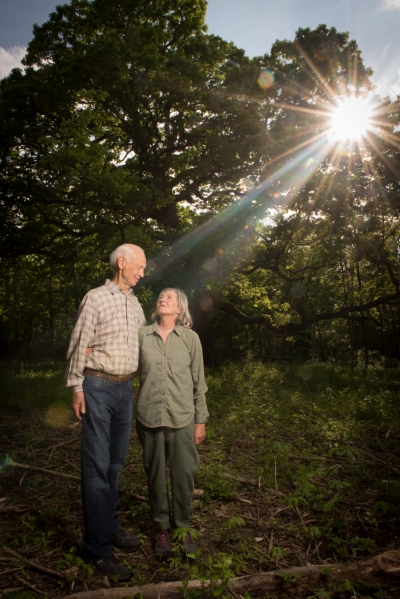 What is your vision for the future of the Sun Foundation?
What is your vision for the future of the Sun Foundation?
Joan: We’ve been very careful over the years to document every program and all the information—someone could just pick up and make it their own. We think we’ve got all the ducks in line so the organization can continue to serve other generations beyond our lifetime. We’ll keep working as long as we are valuable and other people feel we’re doing a good job. It’s our purpose in life. No one in our family has ever retired. Our son Brett has been our third partner for the past 25 years—the Sun Foundation could not have continued for so long without his vision, hard work and talents.
One strength of the Foundation is the farm itself. The habitats are so rich—the place is alive with biological information. This is the “library” we want children to study in. When we are no longer here, we hope it will continue, with our son next in line to keep it going and others who want to see it continue. We rely on the next generation to pay it forward.
Bob: I have to admit: I still enjoy watching ants. I still enjoy seeing a particular kind of fossil and stopping to pick it up. I still enjoy watching the swans fly in and out of the marsh. I still enjoy the changes that are happening… with the trees in bloom outside the window. I don’t always feel like sitting down at the computer and typing about it. I want to be there.
Is there anything else you want to add?
Joan: The Sun Foundation has been able to live to this 46th year only because of the people who joined in the mission. We have the privilege of telling you the story, but there are literally thousands of people who have committed to this organization and given their talents, resources and time. I think we’re not exaggerating when we say there’s a sense of community and family—because we’re not just doing programs. It’s about connections with people that are real. Whether you’re an instructor, donor, volunteer or board member, our philosophy is always… the person comes first. That’s the greatest resource of any organization. You take time not just to evolve support, but also to be a human being and support another human being.
Blaine Adams was our intern in high school. Years later, he’s now a CPA, volunteering his accounting services. Blair Hannah was our intern; he’s now a graphic designer and donates his services to the Sun Foundation. Sally Jo Eastman, who came to Art & Science in the Woods as a child, chairs our board. Danielle Kreie works to coordinate the volunteers—she came here as a child. Something deeper is happening, which gives us hope that the next generation will keep the Sun shining for future generations. PM
